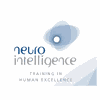
Kathy Penny
Clicking on the Send Me Details Now button opens an enquiry form where you can message Kathy Penny directly
Kathy Penny
Servicing area
Mount Barker, Stirling, Aldgate, Meadows, Heathfield, Crafers, Echunga, Adelaide Hills, SAFocus areas
MYOFASCIAL RELEASE THERAPY
Myofascial Release is a healing technique employed by Practitioners to relieve pain and improve physical and emotional functioning. The theory of MET requires an understanding of the fascial system (or connective tissue).
The fascia is a specialised system of the body that has an appearance similar to a spiders web or a wool sweater. Fascia is very densely woven. It lines and covers every muscle, bone, nerve, artery and veins well as all our internal organs including the heart, lungs, brain and spinal cord. The fascial system is actually a structure that exists from head to foot without interruption. In this way you can begin to understand that each part of the body is connected to every other part by the fascia. like the yarn in a sweater.
Fascia also plays an important role in the support of our bodies, since it surrounds and attaches to all structures providing stability due to the constant pull of the fascial system. In fact our bones can be thought of as tent poles, which cannot support the structure without the constant support of the guide wires (or fascia) to keep the proper amount of tension to allow the tent (or body) to remain upright with proper equilibrium.
In the normal healthy state, the fascia is relaxed and wavy configuration. It has the ability to stretch and move without restriction. When we experience physical trauma or inflammation, however, the fascia loses some of its pliability, becoming tight, restricted and a source of tension to the rest of the body.
MRT Myofascial Release Therapy
Trauma, such as a fall, whiplash, surgery or just habitual poor posture over time has a cumulative negative effect influencing the skeletal framework and our posture. The fascia can exert excessive pressure, producing pain or restriction of motion, affecting our flexibility and so are a determining factor in our ability to withstand stress and strain.
The use of MRT allows us to look at each client as a unique individual. The treatments are hands-on sessions during which the therapist uses a variety of techniques and movements.
The ultimate goal being optimal body alignment, which allows for the most efficient use of energy for daily living.
Myofasical Release benefits the following:
- ACUTE / CHRONIC PAIN
- BACK PAIN & DYSFUNCTION
- HEADACHES
- NEUROLOGICAL PATIENTS
- PELVIC PROBLEMS
- PEDIATRIC PROBLEMS
- CERVICAL PAIN & DYSFUNCTION
- BIRTII & ABUSE TRAUMA
- RESTRICTiON OF MOTION
- SPORTS MEDICINE
- RECURRING INJURIES
- AND MUCH MORE
CRANIO-SACRAL THERAPY
Cranio-sacral therapy adjusts the bones of the skull to treat a range of conditions, from headache and ear infection to spinal cord injury and cerebral palsy. Cranio refers to the cranium, or head and sacral refers to the base of the spine and tailbone. The cranio-sacral system is comprised of the brain and spinal cord (the central nervous system); the cerebrospinal fluid that bathes the brain arid spinal cord; the surrounding meninges (membranes) that enclose the brain, spinal cord, and cerebrospinal fluid, and the bones of the spine and skull that house these membranes.
A cranial therapist is trained to palpate or feel with his/her hands, the motion of the cranio-sacral system as a unified, integrated movement. The touch is extremely gentle and sensitive, and one is able to diagnose the movement of the system as a whole by locating critical points of restriction in the cranium.
Restrictions that result from injury, inflexibility of the joints of the spine and cranium, or from dysfunctions in other parts of the body, can all cause abnormal motion in the cranio-sacral system. The abnormal motion leads to stresses in the cranial mechanism which can contribute to dysfunction and poor health, especially in the brain and spinal cord.
The purpose of cranio-sacral therapy is to enhance the functioning of this important system.
The proper functioning of the cranio-sacral system implies health for the central nervous system. The proper alignment of the craniosacral system allows the nervous system to rest at a more stress free level.
Individuals who experience cranio-sacral treatment describe profound states of relaxation, of feeling lighter and more integrated.
Cranio-Sacral Therapy
is used to evaluate and treat problems involving the brain and spinal cord, especially direct trauma to the head and spine.
Other treatable conditions include:
- AUTUSIM
- CEREBRAL PALSY
- CHRONIC PAIN
- DIZZINESS
- DYSLEXIA
- EDEMA (swelling)
- EPILEPSY
- HEADACHE
- HYPERTENSION
- HYPOTENSION
- MOOD
- RECURRENT INFECTIONS
- STROKE
- TEMPOROMANDIBULAR JOINT SYNDROME (TMJ)
- TIMMITUS (ringing in the ears)
- VARIOUS MUSCULAR CONDITIONS
Professional Membership
- ATMS - Australian Traditional Medicine Society
Nearby Practitioners
View all
Qt
Focus areas

Holistic Psychology
Focus areas

The Soul-Full Mind College
Focus areas

Annie O'Grady, Certified EFT Practitioner and Master Trainer
Focus areas

Neuro-Intelligence
Focus areas
Click on Send Me Details Now to get started
Send Me Details Now